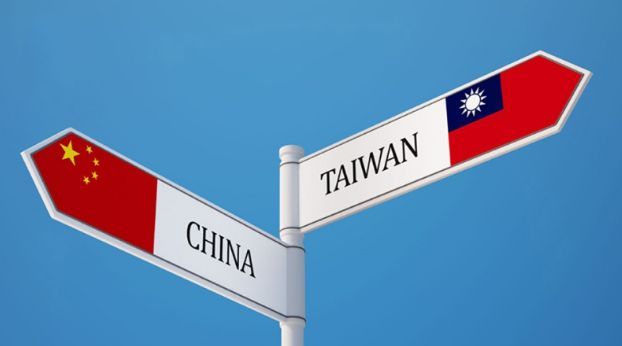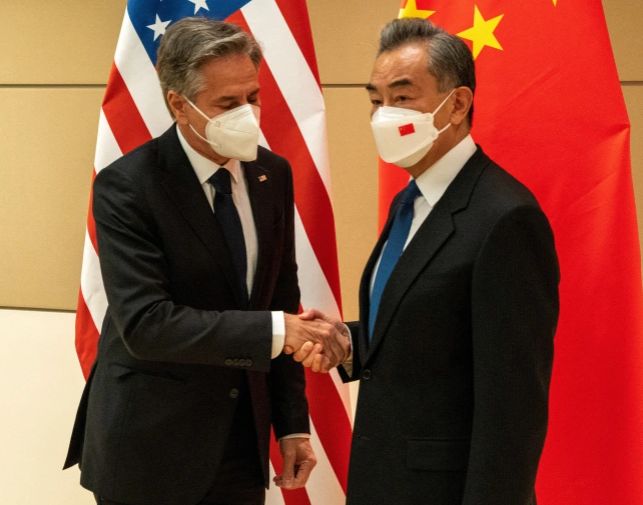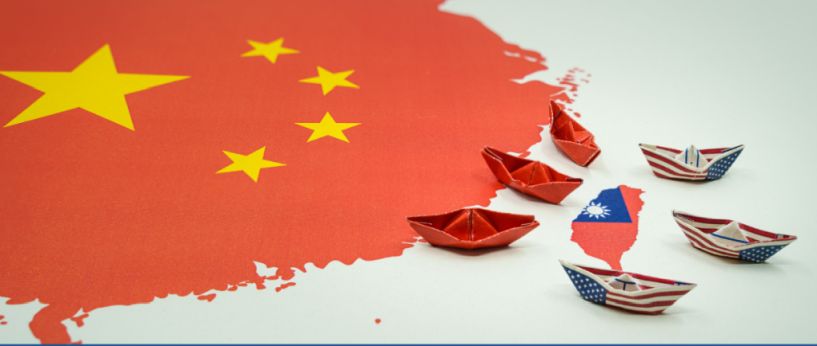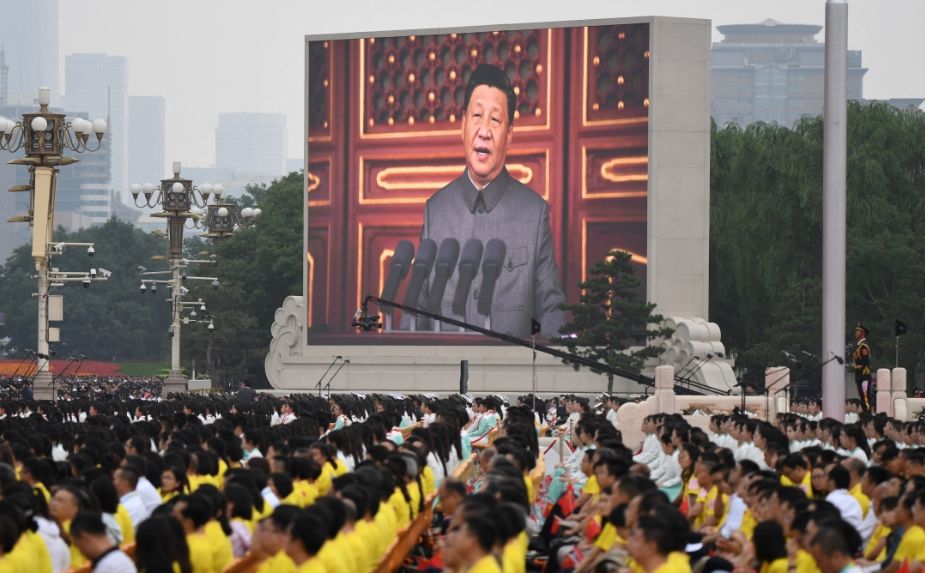By Eric Vandenbroeck
and co-workers
Can a War Over Taiwan Still be Avoided?
As reported earlier,
China has embarked on a series of island reclamations in the South China Sea and turned them into garrisons, ignoring earlier
formal guarantees that it would not. Under Xi, the country has carried out
large-scale, live-fire missile strikes around the Taiwanese coast, simulating a
maritime and air blockade of the island—something that previous Chinese regimes refrained from doing despite having
the ability to do so.
The US faels
forced to contemplate a possibility that many have regarded as
almost unthinkable since the Cold
War: a major military conflict with another great power. For
the first time in decades, Moscow
has been rattling its missiles to warn Washington about its support
for Ukraine. And in early August, following U.S. Speaker of the House Nancy
Pelosi’s visit to Taiwan, Beijing
dramatically escalated its threat of military action over the island.
Almost as startling
as the threats themselves are what they seem to suggest about the limits of economic interdependence as
a force for peace. Both China and
Russia rely to an extraordinary degree on trade for economic growth
and to secure their positions on the world stage.

But as tension rises
between Beijing and Washington over Taiwan, strategists on all sides seem to
have forgotten what game theorists taught years ago: deterring an adversary
from taking a proscribed action requires a combination of credible threats and
credible assurances. Instead of heeding that lesson, a growing number of U.S.
analysts and officials have called for the United States to treat Taiwan as if
it were an independent state and to abandon the long-standing policy of
“strategic ambiguity” in favor of “strategic clarity” defined as an
unconditional commitment to using military force to defend the island in the
event of a mainland Chinese attack. These calls have intensified since Russia
invaded Ukraine, with some commentators even advocating for formal recognition
of Taiwan as a sovereign country. Still, others have called for a permanent
(and significant) deployment of U.S. forces to Taiwan to lend credibility to
the U.S. threat of a military response to a mainland attack. In testimony
before the U.S. Senate last year, Ely Ratner, the assistant secretary of
defense for Indo-Pacific security affairs, implied that the United States could
never allow Beijing to control Taiwan because such an outcome would make it
impossible to defend other U.S. allies in Asia.
Shifting U.S. policy
toward support for Taiwan’s permanent separation from the mainland is more
likely to provoke than deter an attack on Taiwan. Deterrence requires
credibility in both of its elements: threat and assurance. The threat requires
signaling both criminal activity costs and sufficient political will to impose
those costs. The assurance requires conveying to the target, in a way that it
can trust, that it will not be taken advantage of if it refrains from taking
the proscribed action.
Avoiding war in the
Taiwan Strait requires all sides to be deterred. At a minimum, Taiwan must be
deterred from declaring formal independence, Washington must be deterred from
recognizing Taiwan as an independent state or restoring a formal
alliance with the island, and Beijing must be deterred from using military
force against Taiwan to compel unification. All sides must not only be
threatened with harm for crossing these redlines but also be assured that they
will not suffer catastrophic losses to their interests if they refrain from
these actions. Triangular deterrence has succeeded for over 40 years in keeping
the peace across the Taiwan Strait. But rising tensions have made this
delicate arrangement more fragile.

Crumbling Deterrence
Since the beginning
of the Trump administration, deterrence has begun to break down on all sides. Taiwan’s
threat—its ability to exact a military cost from mainland China in case of an
attack—has never been strong. It is only now acquiring mobile weapons that
might enable it to hold off an attack for weeks. Meanwhile, Taiwan’s
assurance—that it will not eventually declare independence if it is not
attacked—has weakened over time. Public opinion polls suggest that a growing
number of Taiwan’s citizens see themselves as Taiwanese rather than as Chinese
or some mix of both. Most citizens of Taiwan still support policies that
maintain the status quo in cross-strait relations and explicitly oppose
pro-independence policies that risk war. But the percentage of the population
that supports eventual independence from mainland China is at an all-time high.
Taiwan’s President Tsai Ing-wen has avoided taking actions that would provoke
an attack. Her ruling Democratic Progressive Party no longer advocates formal
independence for the island, instead asserting that Taiwan, officially known as
the Republic of China, is already a sovereign and independent country and that
all residents of Taiwan must decide any change in the status quo through a
plebiscite. But Tsai has not assured Beijing that Taiwan will refrain from
pursuing de jure independence. For its part, the opposition
Kuomintang also maintains that the Republic of China has always been
independent and sovereign. And it has shifted from a position of advocating
eventual unification with mainland China, albeit only under certain conditions,
to a position of seeking to lower tensions across the strait to preserve
Taiwan’s de facto autonomy as long as possible.
Beijing’s balance of
credible threat and credible assurance has also grown unstable. Mainland China
has long been able to threaten to impose severe military and economic
consequences on Taiwan if it were to declare independence. And now that Beijing
has built up its military capabilities, it can also credibly threaten to impose
such costs on the United States if it were to intervene in a conflict across
the Taiwan Strait. But Beijing has failed to assure Taiwan that refraining from
moving toward permanent separation or independence will be rewarded with
restraint rather than answered by increased efforts to compel unification on
mainland China’s terms. On the contrary, Beijing has greatly increased military
pressure on Taiwan and warned that it would attack if it cannot achieve
unification peacefully. Beijing has not articulated a firm deadline by which
unification must be achieved. Still, Chinese President Xi Jinping has stated
that progress on unification with Taiwan is a prerequisite to fulfilling his
dream of the “great rejuvenation of the Chinese nation,”
for which he set 2049 as the target date.

On the U.S. side,
both aspects of deterrence have also weakened. In the past, the United States could
credibly threaten an effective military response in the event of a mainland
attack on Taiwan. Even if leaders in Beijing believed they would ultimately
prevail, the cost of doing so appeared very high. In addition, Washington
wielded the threat of painful economic sanctions. Meanwhile, through its
consistent adherence across multiple presidential administrations to its “one
China” policy—which, in the words of the 1972 Shanghai Communiqué, has meant
that the United States “does not challenge” the position that Taiwan is a part
of mainland China—Washington was able to credibly assure Beijing that if it did
not use force against Taiwan, the United States would not support independence
for the island and would not restore something akin to the 1954 mutual defense
treaty between the United States and the Republic of China, which was
terminated as part of the agreement between Beijing and Washington to normalize
relations in 1979.
The credibility of
both U.S. threats and U.S. assurance in the Taiwan Strait has been weakened.
Mainland China’s military modernization, especially since the late 1990s,
places at risk in new ways, not only Taiwan but also forward-deployed U.S.
forces that might assist in Taiwan’s defense. For instance, mainland Chinese
missiles, submarines, and cyber-capabilities now hold U.S. Navy ships at risk,
including aircraft carriers, U.S. aircraft, U.S. space assets, and large U.S.
military bases in the Western Pacific, such as those in Japan and Guam.
These new
vulnerabilities question
whether the United States can mount an effective intervention to defend the
island. On the assurance side, the growing rhetoric in Washington to support
Taiwan’s permanent separation from mainland China or restore something akin to
an alliance relationship with the island increases fears in Beijing that
waiting for a peaceful resolution of cross-strait differences will only result
in the permanent loss of Taiwan.

Substance Over Symbolism
To maintain peace and
stability in the Taiwan Strait, the United States must restore the credibility
of its threat to impose costs on Beijing if it attacks Taiwan and the
credibility of its assurance not to damage Beijing’s interests there if the
mainland refrains from such an attack. The United States must reconfigure its
military posture in East Asia to present a credible threat. Instead of relying
on vulnerable aircraft carriers and a few large, concentrated air and naval
bases, Washington could adopt a more mobile, dispersed, and resilient posture
that would be much harder for Beijing to attack and destroy. Often described as
“active denial,” such a strategy would deny mainland China the prospect of a
quick and cheap military victory over Taiwan.
The United States is
already moving in this direction by adopting new army, navy, Marine Corps, and
air force doctrines and procuring large numbers of long-range antisurface and antiship missiles, many of which can outgun
mainland Chinese systems. But the U.S. military must also access additional
locations in the region from which to operate, hardening its existing
facilities to reduce their vulnerability to preemptive strikes, pre-position
munitions, and other supplies in the region, making its military supply lines
from the United States less vulnerable.

To that end, the
United States could continue emphasizing to regional allies that they
have a stake in peaceful, stable cross-strait relations and that
they could contribute to a moderate, responsible U.S. strategy to
deter mainland belligerence. At a minimum, the U.S. military will need greater
access to a more diverse set of locations in Japan to make its posture more resilient
and harder to target. Still, it may also need such access in other countries,
including the Philippines. To the extent possible, the United
States could also try to enhance cooperation with allies to prepare
for joint or coordinated military responses to a conflict over Taiwan. At the
same time, Washington could continue to mount a global diplomatic effort to
emphasize to Beijing the economic and diplomatic costs it would incur during a
conflict.
Taiwan also has a
vital role in deterring a mainland Chinese attack. It must demonstrate its
ability to remain resilient during a blockade and impose high costs on an
invading mainland force. Taiwan could create deeper reserves of
strategic resources such as fuel and food if Beijing elects to blockade the island
instead of invading it. The United States could continue to press Taiwan to
create more robust, mobile coastal defenses and air defenses, turning itself
into a “porcupine” capable of inflicting real pain on an invading mainland
Chinese military. Unlike Ukraine, which enjoys land borders with U.S. allies,
Taiwan would be complicated for the United States to resupply in the event of a
conflict. Therefore, Taiwan must stockpile and train in advance with the
weapons it needs. It must also expand its civil defense capabilities to pose
the threat of in-depth defense to an invading military and distribute essential
resources to the public during a blockade. The United States cannot help defend
Taiwan if the island does not defend itself.

But a credible threat
is not enough to prevent a war. The United States could also restore
credible assurance, ensuring both Taipei and Beijing understand that its
objective is not an independent Taiwan but peace and stability in the Taiwan
Strait. Washington needs to make clear that it does not support
independence for Taiwan, that it opposes any unilateral change to the status
quo by either side, and that it will accept any outcome peacefully agreed to by
mainland China and Taiwan. This has long been the official U.S. position.
Still, a series of statements and omissions by political leaders in Washington
have cast the U.S. approach into doubt, and at times U.S. actions have
contravened these statements. The Biden
administration could therefore speak and act with greater discipline
and consistency on Taiwan than it has so far. Senior
officials could not refer to Taiwan as a country. They could not
say that Taiwan can decide unilaterally that it wants to be independent, as
if the United States has no stake in such a decision. The United
States could make clear that it is not pursuing sovereign status
for Taiwan even as it presses for the island’s inclusion in international
organizations that do not require members to be independent states or for
Taiwan’s meaningful participation short of membership in intergovernmental
organizations such as the World Health Organization and International Civil
Aviation Organization that require statehood for membership, or for the negotiation
of bilateral trade and investment agreements that strengthen the U.S.-Taiwan
economic relationship. The Biden administration could continue to press Beijing
to engage in direct discussions with Taipei’s democratically elected leadership
and to seek a long-term resolution of cross-strait differences that meets the
approval of the people of Taiwan.
The United States
could also avoid symbolic political gestures that needlessly aggravate Beijing,
focusing instead on substantive measures that make Taiwan and forward-deployed
U.S. forces in Asia stronger and more resilient. That means that U.S. officials
and politicians, including members of the U.S. Congress and those campaigning
for office, could refrain from making politically advantageous but strategically
damaging statements about Taiwan. Recent calls for clarity in the U.S. defense
commitment to Taiwan do nothing to enhance the credibility of the U.S.
deterrent threat because Beijing already anticipates that Washington would
intervene in a cross-strait conflict. However, Beijing does not know how
intensely or effectively Washington would do so. An unconditional U.S. defense
commitment, however, would likely undercut the essential deterrent component of
assurance by appearing to restore a de facto alliance relationship between the
United States and Taiwan, thus providing a blank check to future politicians on
the island advocating for de jure independence. Similarly, calling for formal
recognition of Taiwan as a sovereign state, as former U.S. Secretary of State
Mike Pompeo has done; or calling for the stationing of significant U.S. forces
on the island in peacetime, as former U.S. National Security Adviser John
Bolton has done; or designating Taiwan as a “major non-NATO ally,” as the
original language of the Taiwan Policy Act of 2022 proposed, may all sound like
ways to bolster deterrence of a cross-strait conflict. But if these policies
were adopted, they would undercut the assurances to Beijing that are an
essential element of deterrence, increasing rather than decreasing the
likelihood of conflict across the Taiwan Strait.
An
unconditional U.S. defense commitment would, however, likely undercut the
essential component of assurance in deterrence by appearing to restore the
U.S.-ROC alliance relationship and providing a blank check to future
politicians on the island advocating for de jure independence.
Similarly, calling for formal recognition of Taiwan as a sovereign state, as
has former Secretary of State Mike Pompeo, or for the stationing of
significant U.S. forces on the island in peacetime, as has former National
Security Advisor John Bolton, or for Taiwan to be designated as a
“non-NATO ally” as did the original language of the Taiwan Policy Act, may all
sound like ways to bolster deterrence of a cross-Strait conflict. But if these
policies were adopted, they would undercut assurances to Beijing that are an
essential element of deterrence and thereby greatly increase, rather than
decrease, the likelihood of conflict across the Taiwan Strait.
For updates click hompage here